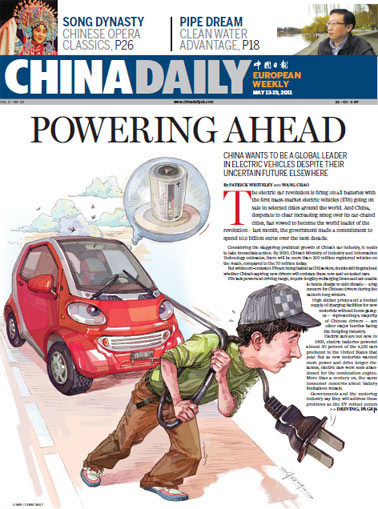Companies
Emerging markets leading global M&A table
Updated: 2011-05-14 09:51
By Liu Yiyu (China Daily)
BEIJING - An increasing number of companies from emerging markets, led by China and India, have taken control of businesses in developed economies since 2002.
That's according to a recent study by the consulting firm, A.T. Kearney.
The number of cross-border merger and acquisitions (M&A) by businesses from emerging countries grew 26 percent in 2010, almost three times higher than the overall market for major M&A transactions.
|
||||
Securing supplies of raw materials, especially in the mining sector, is becoming an increasingly important motive for buyers from developing countries, along with acquisition of innovative technology and market access.
"Chinese buyers are paying several times more than what will be required in the market because of a lack of experience," said Bernhard Hartmann, managing director of A.T. Kearney Greater China.
"Chinese buyers often over-value the target's future because of inexperience."
To underline that point, on May 12, shares in Kalahari Minerals Plc, a resources company with interests in uranium, gold, copper and other base metals in Namibia, traded 22 percent lower than an offer price of 290 pence a share made by China Guangdong Nuclear Power Group.
The company, the nation's second-largest builder of reactors, made the offer before the March 11 earthquake and tsunami triggered a nuclear crisis in Japan.
The deal was proposed at a 17 percent premium to Kalahari's 20-day average prior to the announcement on March 7.
Unlike Japan, which is constrained by a lack of resources and secures supplies by long-term contracts, Chinese companies are keen on gaining ownership of the resources, which can lead to an adverse political reaction in the target's home country.
"Raw materials acquisition is by nature very political," said Hartmann. "As long as the political issues are resolved, the big deals will go well."
To acquire know-how and innovative technologies may be more challenging as it is often very difficult to maintain innovation in a Chinese environment, according to Hartmann, adding that he has not seen much success so far.
E-paper

Green works
Wuxi becomes 'test case' for facing country's environmental challenges
The global rise of Chinese brands
China-EU trade on solid ground
ZTE banks on innovation
Specials

The song dynasty
There are MORE THAN 300 types of Chinese operas but two POPULAR varieties are major standouts

Cut above the rest
One of the world's oldest surgeons has performed more than 14,000 operations

From the ground up
Architect of Guangzhou Opera House has many projects under way, including 2012 Olympics.




